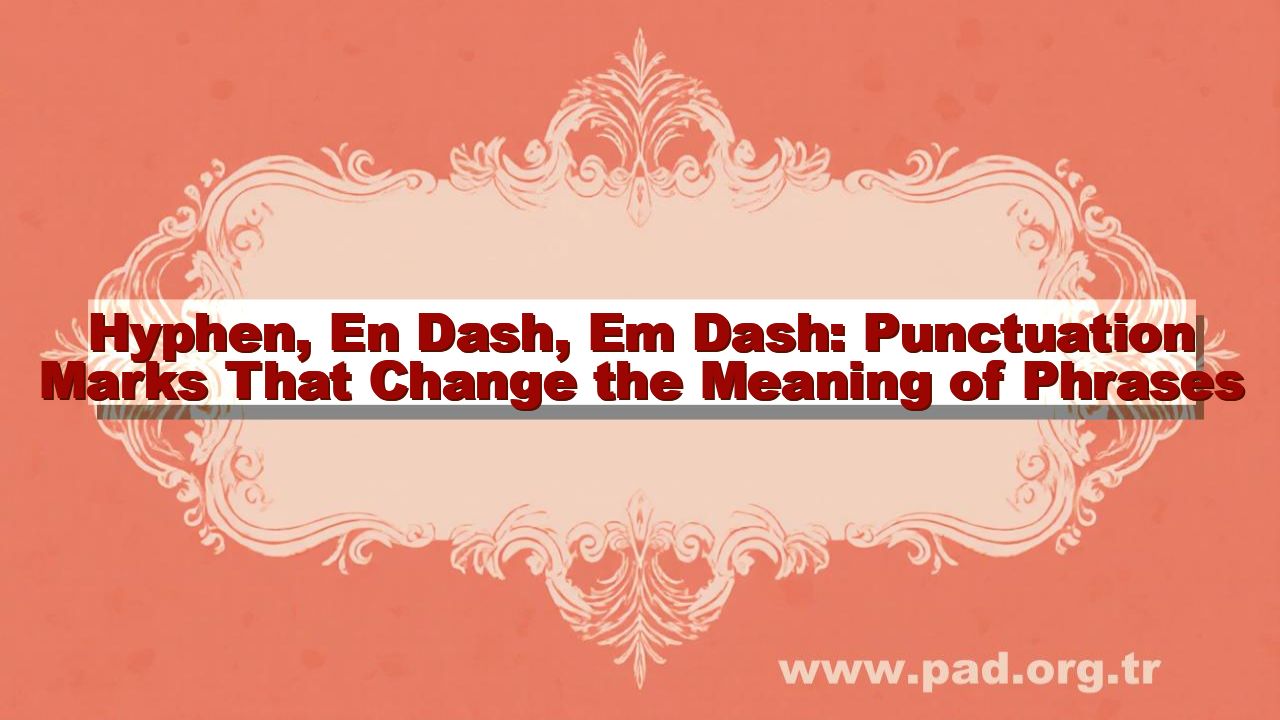The hyphen, the en dash, and the em dash are easily confused, yet they serve distinct purposes. Using the wrong one can absolutely change the meaning and structure of your sentences. The key to mastering these punctuation marks is understanding their function and length: the hyphen (-) is the shortest, the en dash (–) is medium, and the em dash (—) is the longest.
The Hyphen (-)
The hyphen is the shortest mark and its primary function is to join things together, forming compound words or indicating word division.
- Compound Adjectives: Use hyphens to connect two or more words acting as a single adjective before a noun. The hyphen is crucial here; it clarifies that the words modify the noun together.
Example: A well-known author (The author is known well). Compare this to: The author is well known (The author is known and is healthy).
- Compound Nouns/Verbs: Use hyphens to join parts of certain compound words.
Examples: Mother-in-law, re-elect, T-shirt.
- Spelling Out Numbers: Use hyphens for compound numbers from twenty-one through ninety-nine.
Example: Forty-seven.
The En Dash (–)
The en dash is slightly longer than the hyphen (about the width of the letter ‘n’). Its main function is to indicate a range or connection between two endpoints.
- Ranges: Use the en dash to replace the word “to” in sequences of numbers, dates, or times.
Example: The report covers the years 2023–2025. (Meaning: 2023 to 2025).
- Compound Adjectives Involving Open Compounds: Use an en dash when one of the elements being joined is itself an open compound (a phrase that isn’t hyphenated, like “New York”).
Example: The New York–London flight. (Meaning: The flight between New York and London.)*
- Conflicts/Connections: Use the en dash to show a link or conflict between two things of equal weight.
Example: The North–South debate.
The Em Dash (—)
The em dash is the longest mark (about the width of the letter ‘m’). It is the most flexible and dramatic of the three, used to indicate an abrupt break, set off material, or show interruption.
- Parenthetical Statements (Stronger Break): Use a pair of em dashes to set off an interjection or explanation, offering a stronger, more emphatic pause than commas or parentheses.
Example: My new car—a sleek, black sedan—broke down on the first day.
- Abrupt Break or Interruption: Use an em dash to show an abrupt change in thought or a speaker being interrupted.
Example: We must finish this project by—oh, look, there’s the CEO.
- Summaries or Appositives: Use a single em dash to set off a summarizing statement or an important appositive at the end of a sentence.
Example: Commitment, intelligence, and hard work—these are the keys to success.
Note: In U.S. style, the em dash is typically used without spaces on either side. In other styles (like British), a spaced en dash is sometimes used to fulfill this function.

